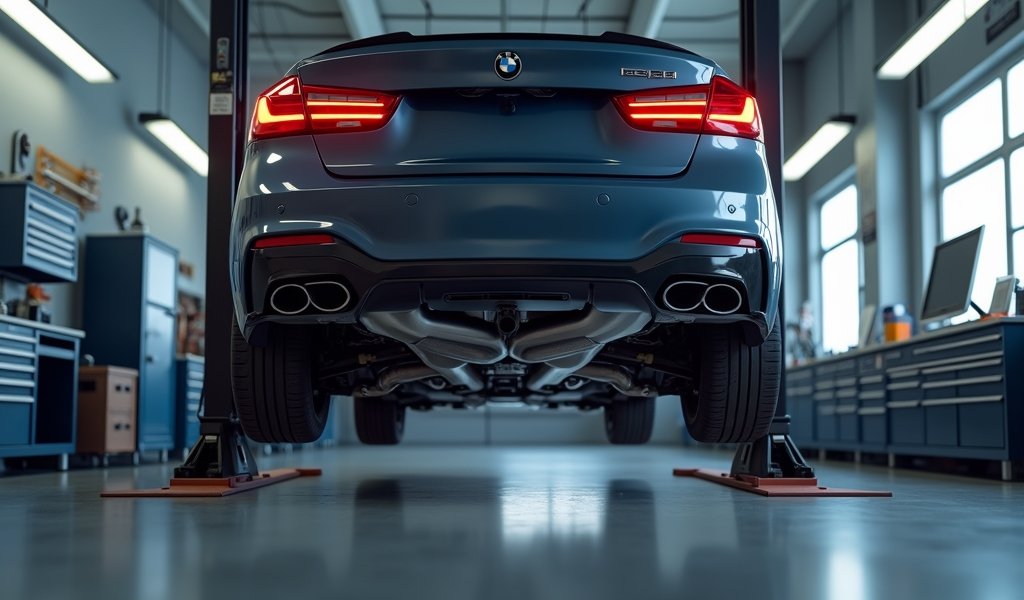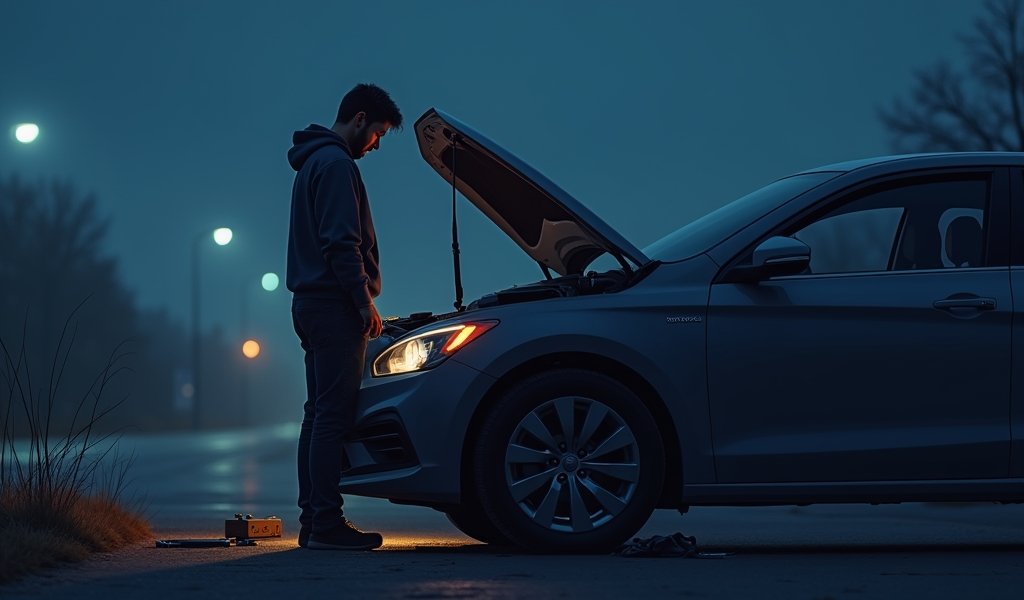Overview
This article explains catalytic converter light off time—the period needed for a catalytic converter to reach optimal operating temperature (around 600°F)—and provides solutions to improve it. It details why faster light off matters for emissions, performance, and fuel economy, while offering practical maintenance tips and modifications ranging from simple fixes like using quality fuel and repairing exhaust leaks to advanced solutions such as ceramic coatings and electrically heated converters.
Table of Contents
- Understanding Catalytic Converter Light Off Time
- Why Catalytic Converter Light Off Time Matters
- Common Causes of Delayed Light Off Time
- Diagnosing Slow Light Off Issues
- Practical Hacks to Improve Light Off Time
- Advanced Modifications for Enthusiasts
- Maintenance Tips for Optimal Catalytic Converter Performance
- Conclusion
- Frequently Asked Questions
Understanding Catalytic Converter Light Off Time
If you’ve ever started your car on a chilly morning and noticed that telltale smell of raw exhaust, you’ve experienced the effects of catalytic converter light off time firsthand. Don’t worry – I’m not going to bombard you with jargon. Think of catalytic converter light off time as your car’s warm-up period for clean emissions – it’s the time it takes for your catalytic converter to reach its working temperature and start doing its job effectively.
When you first start your engine, especially in cold weather, your catalytic converter is basically sleeping on the job. It needs to reach around 600°F (315°C) before it “wakes up” and starts converting those harmful emissions into less harmful substances. This warming-up period is what we mechanics call the “light off time,” and it’s crucial for your vehicle’s overall catalytic converter efficiency.
During this warm-up phase, your vehicle is producing its highest levels of pollutants – up to 80% of your car’s total emissions can occur during these first few minutes! That’s why catalytic converter light off time has become such a hot topic (pun intended) in automotive engineering and environmental circles. Manufacturers are constantly looking for ways to reduce this time to meet stricter emission standards.
But what exactly happens during light off? Picture your catalytic converter as a chemical nightclub. When cold, the doors are closed and the party (chemical reactions) can’t start. As it heats up, the doors open, and suddenly all those harmful exhaust gases are invited in to dance and transform into less harmful substances. The moment the party really gets going – that’s your light off point!
Why Catalytic Converter Light Off Time Matters
You might be wondering, “So what if my catalytic converter takes a minute or two to warm up?” Well, those minutes matter more than you might think. First off, let’s talk about our planet. Those cold-start emissions are packed with nasty pollutants that contribute to smog, acid rain, and other environmental issues. Reducing catalytic converter light off time directly translates to cleaner air – something we can all get behind.
From a performance perspective, a catalytic converter that reaches operating temperature quickly helps your engine run more efficiently. Modern vehicles actually adjust their fuel mixture based on whether the catalytic converter is up to temperature. When the converter is cold, the engine runs “rich” (more fuel than ideal), which affects both power and fuel economy.
There’s also the legal angle to consider. Emission standards worldwide are getting stricter by the year, and much of the focus is on those cold-start emissions. In fact, EPA emissions tests now place significant emphasis on the first few minutes of operation. If your catalytic converter light off time is excessive, you might fail emissions testing in states with strict requirements.
And for my fellow car enthusiasts who care about performance, a catalyst that lights off quickly can mean fewer restrictions on your engine’s tuning. Modern engine management systems often run conservative fuel maps until the catalyst is fully operational – get it warmed up faster, and you’ll spend more time in the optimal performance zone.

Common Causes of Delayed Light Off Time
Just like how some of us take longer to get going in the morning, your catalytic converter might be sluggish for several reasons. Let’s look at what might be causing your catalyst to hit the snooze button:
Aging catalytic converters are prime culprits. The precious metals inside (platinum, palladium, and rhodium) degrade over time, requiring higher temperatures to catalyze reactions. It’s like an old coffee maker that needs extra time to brew – the catalyst just isn’t as reactive as it once was.
Exhaust leaks can be silent saboteurs of your light off time. When cold air sneaks in through cracks or loose connections, it’s like trying to heat your house with the windows open. These leaks create a cooling effect that forces your converter to work harder to reach operating temperature.
Poor fuel quality might seem unrelated, but it’s a significant factor. Low-quality fuel can leave deposits on the catalyst surface – imagine trying to heat a pan that’s covered in gunk. These deposits insulate the catalyst materials, making heat transfer less efficient and extending the secondary air injection phase needed during cold starts.
Engine misfires are another common culprit. When your engine isn’t firing properly, unburnt fuel enters the exhaust system. This fuel can actually cool the catalytic converter when it should be heating up, significantly delaying light off time. It’s like trying to start a campfire with wet wood – technically there’s fuel, but it’s working against you.
Incorrect oxygen sensor readings can also throw a wrench in the works. Your O2 sensors tell the engine computer how to adjust the fuel mixture. If they’re sending faulty signals, your engine might run too lean during warm-up, generating less heat and extending catalytic converter light off time. This is why understanding your vehicle’s oxygen sensor replacement interval is crucial for maintaining optimal emissions control.
Diagnosing Slow Light Off Issues
Before you can fix a problem, you need to confirm it exists. How do you know if your catalytic converter light off time is lagging? There are several telltale signs that even non-mechanics can spot.
The most obvious indicator is a persistent check engine light accompanied by a P0420 or P0430 code (Catalyst System Efficiency Below Threshold). Modern vehicles monitor catalyst efficiency, and when light off takes too long, the computer notices. It’s like your car saying, “Hey, this catalyst isn’t warming up like it should!”
A noticeable smell of sulfur or “rotten eggs” during startup that lingers longer than usual suggests incomplete catalytic conversion. Normally, this smell should disappear quickly as the converter reaches operating temperature. If it sticks around, your light off time is likely extended.
Failed emissions tests are another clear sign. Most emissions testing facilities measure your vehicle’s exhaust during a “cold start” cycle. If your catalytic converter isn’t reaching light off quickly enough, you’ll see elevated hydrocarbon (HC) and carbon monoxide (CO) readings on the test results.
For those with access to diagnostic equipment, monitoring the temperatures before and after the catalytic converter can provide valuable insights. A properly functioning converter should show a significant temperature increase after light off occurs – typically within 1-2 minutes of startup. According to research from the Society of Automotive Engineers, the temperature differential should be at least 50°F during normal operation.
You can also perform a simple “rev test” to check catalyst function. With the engine fully warmed up, have someone rev the engine to 2,000 RPM and hold it there for about 30 seconds. If you notice the exhaust note changing slightly (becoming smoother or quieter), it suggests the catalyst is working properly. No change might indicate catalyst issues affecting light off time.
Practical Hacks to Improve Light Off Time
Now for the good stuff – practical, accessible ways to improve your catalytic converter light off time without breaking the bank or needing an engineering degree:
- Use high-quality fuel with proper detergents. Premium fuels often contain additives that help keep your fuel system and catalytic converter cleaner, improving heat transfer and chemical reactions.
- Add a catalyst cleaner to your fuel tank every 3-6 months. These cleaners help remove deposits from both your fuel system and the catalyst surface, improving efficiency during the critical warm-up phase.
- Check and fix any exhaust leaks. Even small leaks before the catalytic converter can dramatically impact light off time by allowing cold air to enter the exhaust stream.
- Ensure your engine is properly tuned with special attention to the ignition system. A properly timed spark means more complete combustion and hotter exhaust gases reaching the converter.
- Consider a thermal wrap for your exhaust manifold and downpipe (the section before the catalytic converter). This insulation helps retain heat, allowing the exhaust gases to arrive at the converter at higher temperatures.
One often overlooked hack is adjusting your driving habits during the first minute after a cold start. Avoid immediate high RPMs, but don’t baby the engine either. A steady 1,500-2,000 RPM for the first 30 seconds can generate the optimal exhaust temperature for faster light off without causing undue wear.
For those in colder climates, consider an engine block heater or battery-powered catalyst heater. These devices pre-warm components before you even start your car, dramatically reducing catalytic converter light off time in freezing conditions.
One of my customers saw dramatic improvements by simply fixing a small exhaust leak near the manifold. His catalytic converter light off time went from nearly three minutes to under one minute – all from a $15 gasket replacement that took 30 minutes to install!

Advanced Modifications for Enthusiasts
For those willing to go the extra mile (and spend a bit more), there are some impressive modifications that can dramatically reduce catalytic converter light off time:
Ceramic-coated exhaust manifolds and downpipes work wonders. The ceramic coating acts as a thermal barrier, keeping heat inside the exhaust system rather than radiating it away under the hood. This means hotter gases reach your catalytic converter faster. I’ve seen reductions in light off time of up to 40% with quality ceramic coatings.
Header designs matter significantly. Equal-length headers not only improve performance but can deliver exhaust gases to the catalytic converter more efficiently and at more consistent temperatures. This helps the catalyst reach light off temperature more uniformly, improving overall efficiency.
For the truly committed, there are electrically heated catalytic converters (EHCs) or pre-catalysts. These systems use electrical resistance to pre-heat the catalyst material before the exhaust gases even arrive. While expensive, they can reduce light off time to mere seconds rather than minutes.
A less-known modification involves relocating the catalytic converter closer to the exhaust manifold – what we call “close-coupled catalysts.” This positioning takes advantage of the highest exhaust temperatures right out of the engine. According to research published in the Journal of Environmental Sciences, this configuration can reduce light off time by up to 70% in some applications.
Consider a tune specifically optimized for cold-start conditions. Professional engine tuners can adjust your vehicle’s startup parameters to provide the ideal air-fuel mixture and ignition timing for faster catalyst heating without compromising long-term reliability.
Maintenance Tips for Optimal Catalytic Converter Performance
Preventative maintenance is always cheaper than repairs. These simple practices will help maintain optimal catalytic converter light off time throughout your vehicle’s life:
- Change your oil regularly. Old, contaminated oil can lead to incomplete combustion, which affects exhaust temperatures and catalyst function.
- Replace your oxygen sensors according to your manufacturer’s recommended interval. Aging O2 sensors can send inaccurate data to your engine computer, resulting in sub-optimal fuel mixtures during warm-up.
- Keep your air filter clean. A restricted air filter forces your engine to work harder and can alter the air-fuel ratio, potentially extending light off time.
- Address check engine lights promptly, especially those related to the fuel or ignition systems. Many minor issues can have a compounding effect on catalytic converter performance.
- Consider periodic catalytic converter cleaning services. Some shops offer hydrogen cleaning that can restore some capacity to aging catalysts.
One maintenance tip I always share with my customers: drive your car! Short trips where the engine never fully warms up are terrible for catalytic converters. These brief journeys don’t allow the converter to reach and maintain operating temperature, which can lead to condensation and even internal corrosion. Try to take a 20-minute highway drive at least once a week to keep things working properly.
Also, be mindful of what goes into your gas tank. Certain fuel additives containing silicone or lead can permanently damage catalyst materials. Stick to additives specifically labeled as “safe for catalytic converters” or those from reputable manufacturers.
Remember that your entire exhaust system works as a unit. Maintaining proper back pressure and flow characteristics throughout the system helps optimize the environment for your catalytic converter to function efficiently, including during the critical light off period.
Conclusion
Optimizing your catalytic converter light off time is one of those rare automotive improvements that benefits everyone – you get better performance and fuel economy, while the planet gets cleaner air. Whether you’ve implemented the simple maintenance tips or gone all-in with advanced modifications, reducing the time it takes for your catalyst to reach operating temperature is a worthwhile endeavor.
Remember that catalytic converter light off time is a balancing act. Too aggressive an approach can damage expensive components, while doing nothing might leave you with poor performance and failed emissions tests. The key is to start with the basics – fix leaks, use quality fuel, and maintain your ignition system – before considering more advanced solutions.
With the strategies outlined in this article, you should be well-equipped to tackle this often-overlooked aspect of vehicle performance. Your catalytic converter might not be the most glamorous part of your car, but giving it some attention will pay dividends in both the short and long term.
So the next time you start your car on a cold morning, you can feel a bit better knowing that you’ve done your part to minimize those critical first few minutes of emissions. Your catalytic converter will thank you, your wallet will thank you, and the environment will definitely thank you!
Frequently Asked Questions
What exactly is catalytic converter light off time?
Catalytic converter light off time is the period it takes for your catalytic converter to reach its operating temperature (approximately 600°F) after a cold start. During this time, the converter is not fully effective at reducing emissions.
How long should catalytic converter light off take?
In modern vehicles with properly functioning systems, light off typically occurs within 60-120 seconds of starting the engine. Older vehicles or those with issues may take significantly longer.
Can catalytic converter light off time affect fuel economy?
Yes, during the light off period, engines typically run with a richer fuel mixture which consumes more fuel. Reducing light off time can improve overall fuel economy, especially for drivers who make frequent short trips.
Is slow light off time always a sign of a failing catalytic converter?
Not necessarily. While converter degradation can extend light off time, issues like exhaust leaks, oxygen sensor problems, or engine misfires can also cause delayed light off without the converter itself being damaged.
Are there any quick fixes for improving light off time?
The quickest improvements come from fixing exhaust leaks, ensuring proper ignition system function, and using quality fuel with occasional catalyst cleaners. These simple steps can significantly improve light off performance without major modifications.

